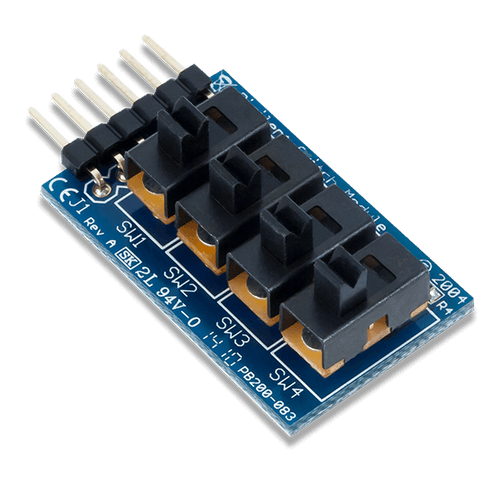The Pmod KYPD is a 16-button keypad arranged in a hexidecimal format (0-F). By digitally driving a column line to a logic low level and digitally reading each of the rows, users can determine which button is currently pressed.
- 16 momentary push-buttons
- Can detect simultaneous button presses
- Isolated rows and columns
- Small PCB size for flexible designs 3.4“ × 2.7” (8.6 cm × 6.9 cm)
- 12-pin Pmod connector with GPIO interface
- Follows Digilent Pmod Interface Specification Type 1
- Library and example code available in resource center
- Pmod KYPD
- Custom antistatic Pmod packaging
Quickly find what you need to get started and reduce mean time to blink.
All product support including documentation, projects, and the Digilent Forum can be accessed through the product resource center.
Resource Center




![Size comparison product image of the Pmod KYPD: 16-button Keypad and a US quarter (diameter of quarter: 0.955 inches [24.26 mm]; width: 0.069 inches [1.75 mm]). Size comparison product image of the Pmod KYPD: 16-button Keypad and a US quarter (diameter of quarter: 0.955 inches [24.26 mm]; width: 0.069 inches [1.75 mm]).](https://cdn11.bigcommerce.com/s-7gavg/images/stencil/50x50/products/191/3237/Pmod_KYPD_use_600__96921.1670977673.png?c=2)




